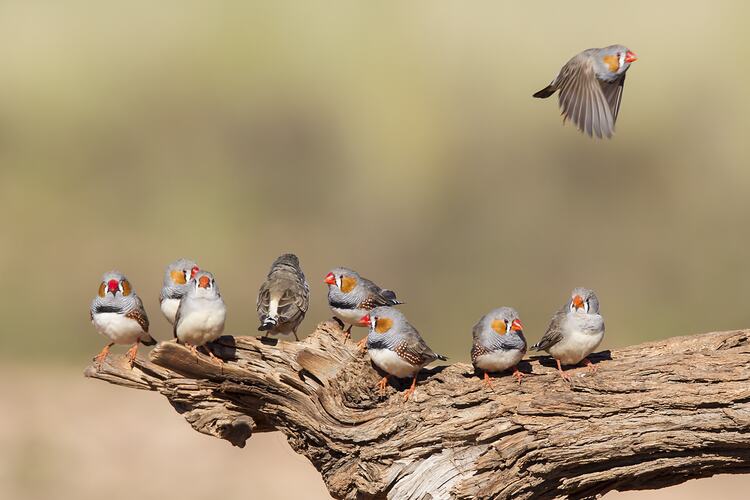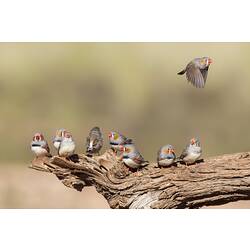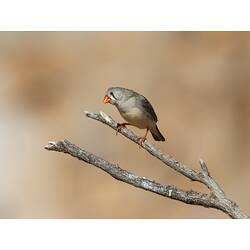General Description
Head and throat grey, with a long black comma under the eye and a matching white patch between it and the red bill. Wings and back brown. Tail banded black and white. Males have a distinct orange cheek patch, black-barred throats, a black breast-band, and a rufous patch spotted with white on the flanks. Belly white, buff in females. Juveniles similar to females, but more drab with a black bill. To 11 cm.
Biology
Occurs in flocks. Has a large home area and is able to disperse far in response to favourable conditions. Forages on the ground for seeds, occasionally taking invertebrates and plant matter. Typically drinks daily, although able to survive on the water content of seeds and leaves for many months. Breeds when abundant seed is ripening. Pairs bond for life, and choose a nest-site, build the nest, incubate eggs and feed chicks together. Nests are domes or pear-shaped with a side entrance, made from grass or other plant material. Eggs are whitish, cream or bluish white, sometimes with faint grey marks at the narrow end. Clutch size is normally 4-5, and incubation lasts about 2 weeks. Young leave the nest when about 2 weeks old, but stay as a family until the parents try to breed again.
Distribution
Across Australia.
Habitat
Grasslands, shrublands and sparsely-treed woodlands, usually not far from water.
More Information
-
Animal Type
-
Animal SubType
-
Brief Id
Finch with a grey head and throat, a long black comma under the eye and a red bill. Males with distinct orange cheek patch.
-
Colours
Brown, Black, White, Orange
-
Maximum Size
11 cm
-
Habitats
-
Diet
Omnivore
-
Endemicity
-
Commercial
No
-
Conservation Statuses
CITES: Not listed, FFG Threatened List: Not listed, EPBC Act 1999: Not listed, IUCN Red List: Least Concern
-
Taxon Name
-
Common Name
Zebra Finch
-
Kingdom
-
Phylum
-
Subphylum
-
Class
-
Order
-
Family
-
Genus
-
Species Name
guttata



